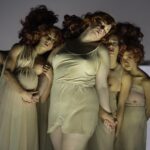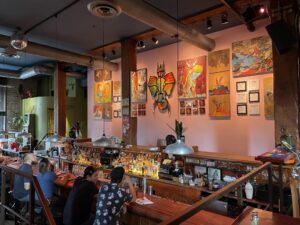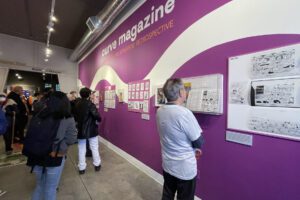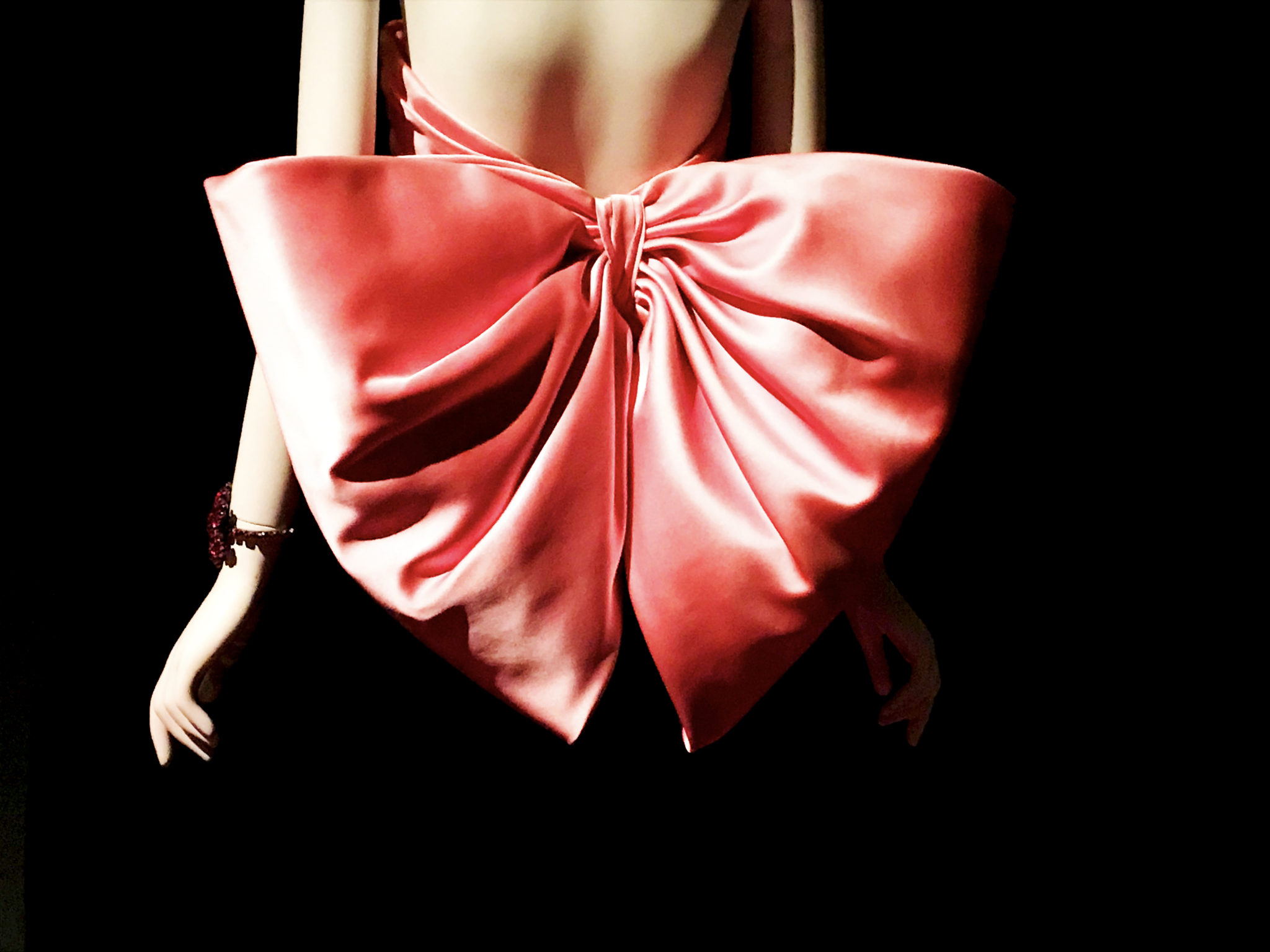
The History Of Pink Exhibit At The Museum At The Fashion Institute of Technology In New York
by Heather Cassell
Pink isn’t what you think it is.
It’s not just the rock star Pink’s stage name or Janelle Monae’s vagina pants in her song “Pynk.”
It isn’t just the pale blush color of the Ralph Lauren dress actress Gwyneth Paltrow wore to the Academy Awards when she won the Oscar in 1999.
Most of all, pink wasn’t a color utilized to specifically label girls until the latter two decades of the 20th century.
The complicated history of the color pink is explored at “Pink: The History of A Punk, Pretty, Powerful Color” exhibit at the Museum at the Fashion Institute of Technology running now through January 5,
The free exhibit is also available virtually and with an audible guide available online.
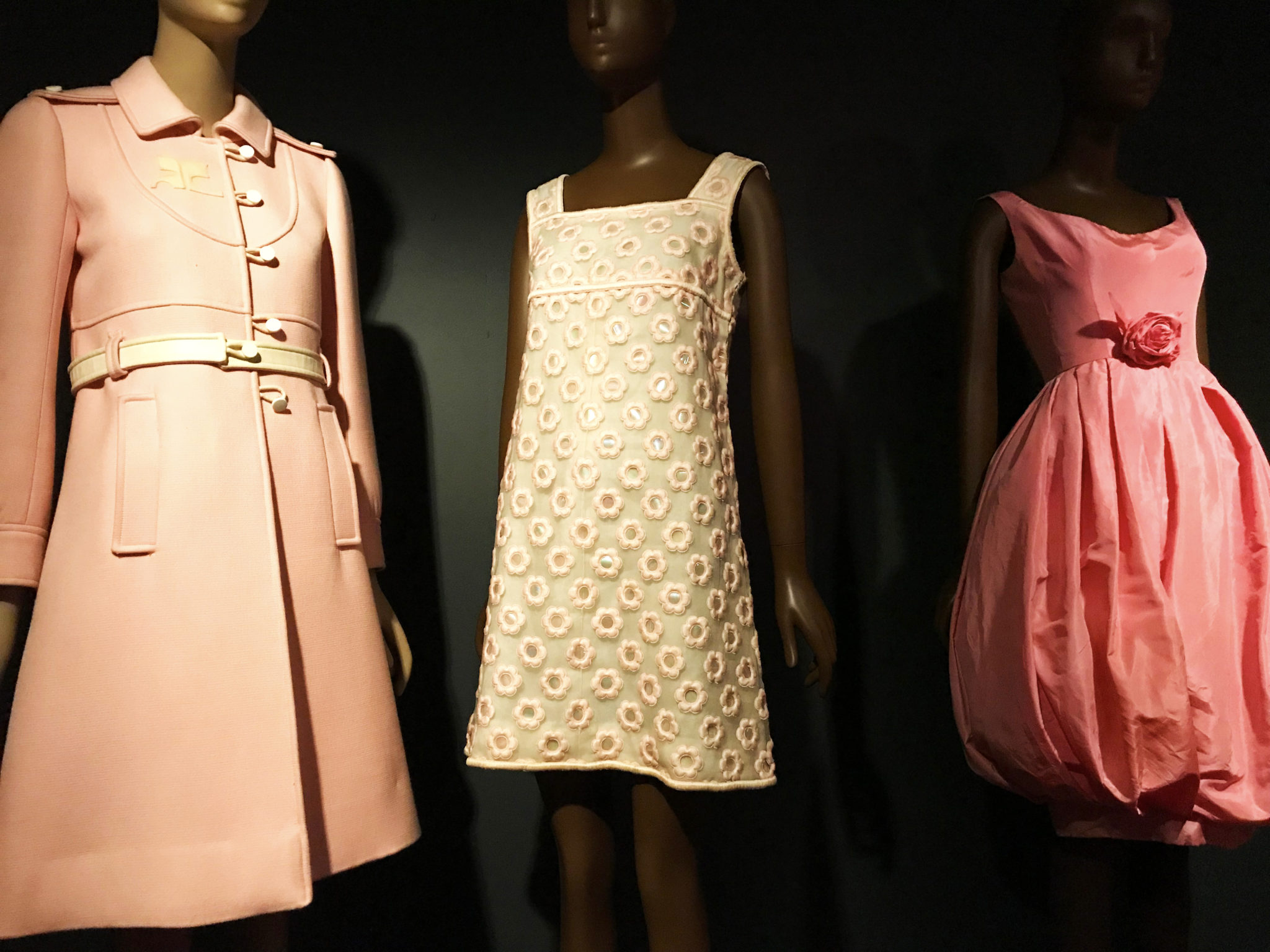
Pretty In Pink
The audio tour can be downloaded to a smartphone from the website or by scanning the QR code at the exhibit. I had difficulty downloading and scanning the QR code on my iPhone, but it could have been the signal due to the exhibit being in the basement gallery of the museum or some other technical difficulty.
Through the lens of fashion, the exhibit takes viewers through how the color has been defined through eastern and western culture, gender, media, pop culture, rock ‘n roll, and social justice movements. Valerie Steele, Ph.D., director of the museum, takes audiences on a fascinating journey that is truly eye-opening about a color that has largely been misunderstood and taken for its blushing value.
Pink goes beyond simply dyes, textiles, and garments but into Eastern and Western cultural interpretations and uses of the color in media, pop culture, and even social justice movements.
Steele reveals how people have manipulated pink employing their own gazes, interpretations and meaning of the color, particularly taking a gender-neutral color and feminizing it.
Gwyneth and Janelle’s garments are on display at the exhibit, but so are historical garments from the late 1800s, garments from around the world from Japan, India, and Morocco, and pink is used in political and sexual fashion statements.
The exhibit is a fascinating examination of the entire history of the color painted with a broad stroke by Steele. She delves into designers’ use of the color in fashion and toys for girls to gendering and politics.
She does a deep dive into pink and extracts the meaning societies have placed on the many hues of the color from its pale nude to neon pink pulling together all of the facets where pink has appeared. Steele shows how pink sometimes appears in unexpected places and interprets how the color has been embraced from society to society and generation to generation.
It’s a completely whole new way to look at the color through the nearly 170 years since textile artists discovered how to create a pink dye that wouldn’t fade in the blush of a moment.
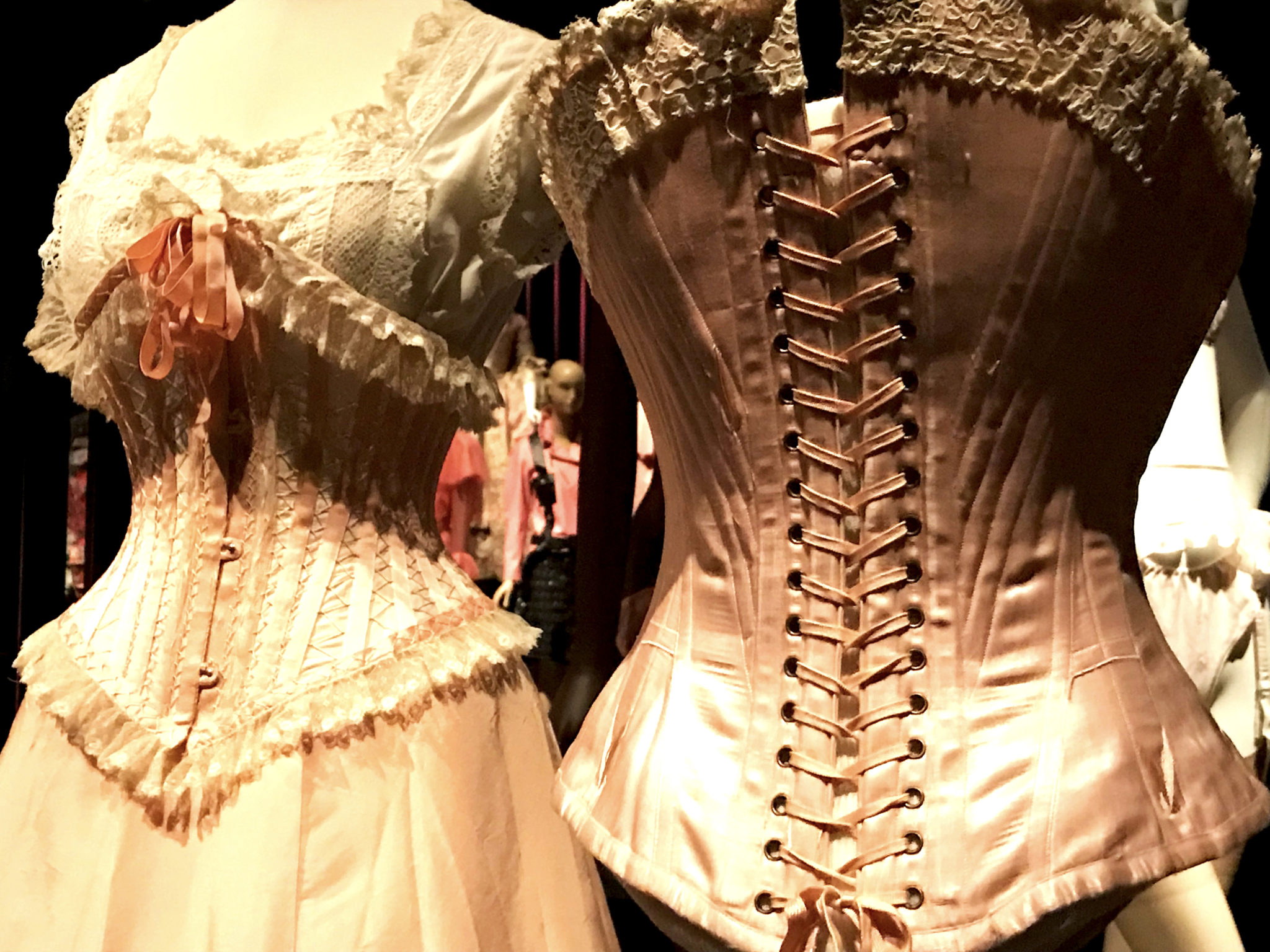
The Gendering Of Pink
Pink is not a delicate color. Until as far as the 1980s, pink was a gender-neutral color, viewers learn. Pink was fashionable among men and women in the 1800s into the early 20th century before fashionistas and marketers color-coded gender: pink for girls and blue for boys. The 1950s America marketed the gender color coding suggested by the French in the late 1800s, but it wasn’t until the 1970s and 1980s that pink officially became the color for girls and blue for boys, viewers learn at the show.
Going back in time, pink was a color royals wore for special events in India until it eventually became like the “navy blue” for India, exhibit curators quoted Diana Vreeland. Moroccan men adorned themselves in a pink hooded cape and the color has been an important color for the African diaspora. In Japan, both men and women embrace the color in their fashion from the baby doll dresses to punk attire far from the cool American 1980s Preppies boys and “Miami Vice.”
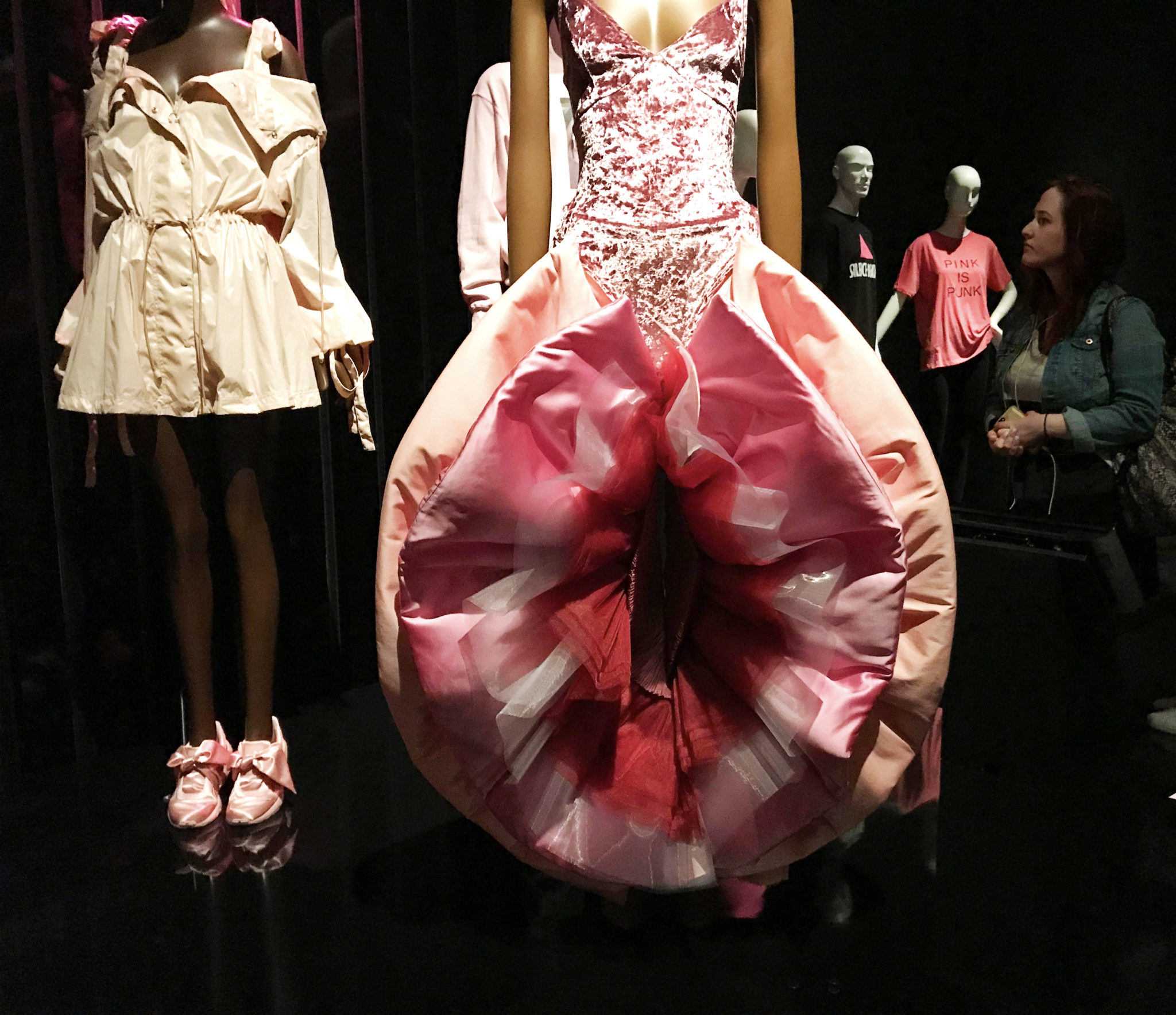
Rocking Pink
The pretty-boy pink look was far from the punk rockers and the political activists who have taken pink to new revolutions, mostly among the women’s movements.
Paul Simonon, the bass guitarist for The Clash, crowned pink was as the color of rock ‘n roll as the “only true rock ‘n’ roll color,” curators noted.
Rock is one of the places where I didn’t expect the color to make such an impact, but it has appearing everywhere from accents in instruments and fashion to being front and center in full on florescent punk rock to embracement of women’s sexuality in very Barbie-like and -unlike way.
Pink showed up in rock ‘n roll culture as far back as the very beginning. It shouldn’t be a surprise since, as mentioned before, pink is a significant color to the African diaspora and rock ‘n roll’s roots are in the African-American community, when I took a step back with Steele’s explanations. However, white rock stars, like Elvis Presley, appropriated the color for themselves adorning themselves with pink or hints of various hues of the color in their attire and instruments. It all makes sense to me now thanks to the curators pointing out the pink references, like with Sugar Ray Robinson who drove a pink Cadillac. Perhaps he was the inspiration for the popular “Pink Cadillac” songs sung by the late songstresses Aretha Franklin and Natalie Cole. He certainly influenced Elvis, according to the curators.
Subversive Power
The exhibit also notes how pink was used in more sinister ways. Pink’s not as bright history includes being used as Hitler’s emblem of homophobia: The Pink Triangle.
The Pink Triangle was reappropriated by the gay community during the HIV/AIDS crisis of the 1980s and 1990s. The AIDS Coalition adopted the Pink Triangle as a symbol of activism that went viral appearing everywhere on stickers to street art to t-shirts. One of the most popular emblems emblazed on a t-shirt of the HIV/AIDS era was “Silence = Death” with the Pink Triangle which is on display at the exhibit too.

The women’s movement in particular due to the gendering of pink and also simply due to the suggestive coloring of female body parts from genitalia to lips to blushing has reappropriated the color, curators noted. Some women have taken back pink in their rallying cries for equality around the world. Examples can be seen in the all-female defense group the Gulabi (Pink) Gang, a women’s rights group in India written about in “Pink Sari Revolution: A Tale of Women and Power in India” by Amana Fontanella-Khan, to the Women’s March’s pussy hats, curators noted.
Not all feminists agree with the reclaiming of the color pink for women’s empowerment harshly criticizing women who have reclaimed the color for embracing its gendering and suggestive feminine eroticism the curators pointed out in the exhibit.
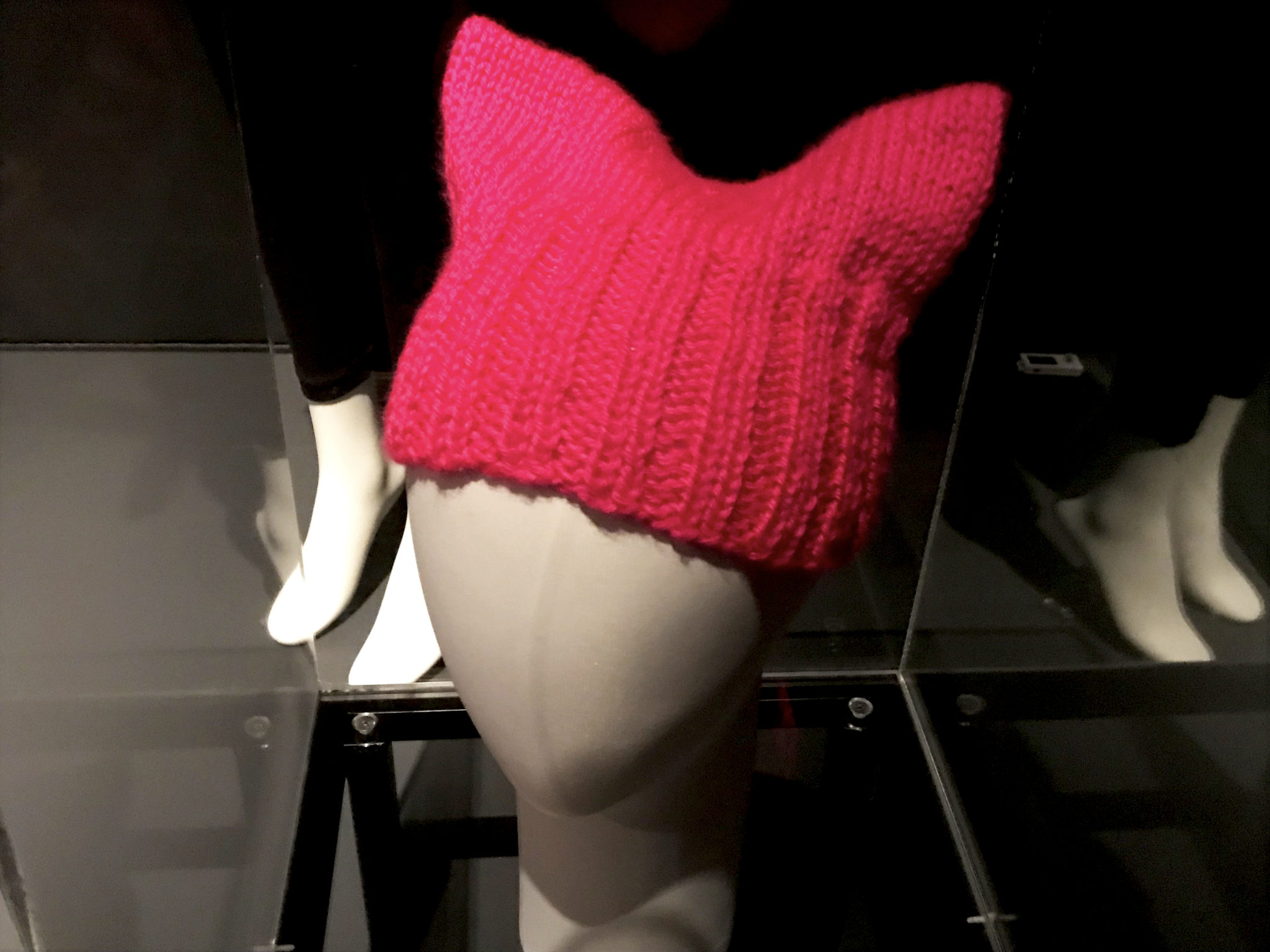
The exhibit changed my perspective of pink. It’s much more complicated than I originally thought during my many years shunning the color simply because of its manufactured labeling of girls. I’m better for Steele and her team of curators bringing the color into sharp focus through this exhibit.
It’s helped me not to judge a color by its
THE GAZE
The Museum at the Fashion Institute of Technology, 227 West 27th Street, New York, New York 10001. 212-217-4558. . fitnyc.edu/museum.
THE TICKET: $
($ = $0 – $10, $$ = $10 – $30, $$$ = $30 – $100, $$$$ = Over $100 price of average ticket to enter the event)
SHOW:
TYPE OF EVENT: Exhibit
RATING: 5
(0 being the worst rating and 5 being the best rating; 5 = midnight blue; 4 = black; 3 = Aqua; 2 = orange; 1 = gold; and 0 = green)
VIBE: Casual. Guests can take their time exploring the exhibit.
SCENE: Guests discussed the fashion and the ideas the exhibit raised in animated hushed whispers to simply observing and taking in the information.
SERVICE: The exhibit is guarded by two security guards who remind guests that no video is allowed, but photography is allowed. The guards are helpful attempting to answer questions and pointing viewers to the two exhibit rooms. Students at the entrance to the museum offer assistance guiding guests where the exhibits are located to offering to take photos.
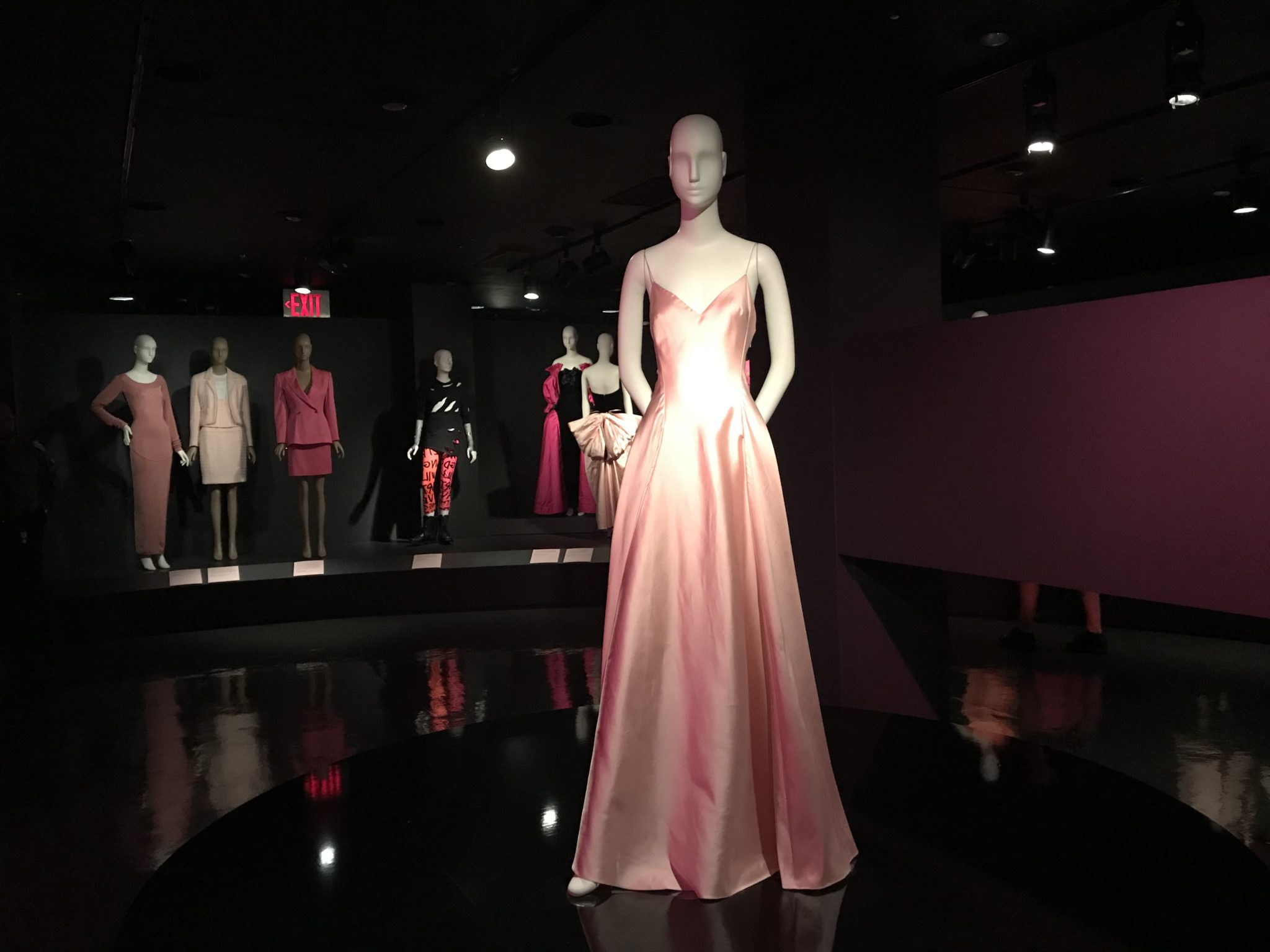
DAZZLE ME AGAIN: It’s impressive how the curators were able to distill the complex history of the color pink into two rooms that take viewers on a journey through an in-depth interpretation of pink.
WHERE TO NEXT?: Unknown if the event will travel.
WORTH THE OUTTING?: This was a rock’n good time!
Book your next trip to New York with Girls That Roam Travel. Contact Heather Cassell at Girls That Roam Travel at 415-517-7239 or at .
To contract an original article, purchase reprints or become a media partner, contact .

